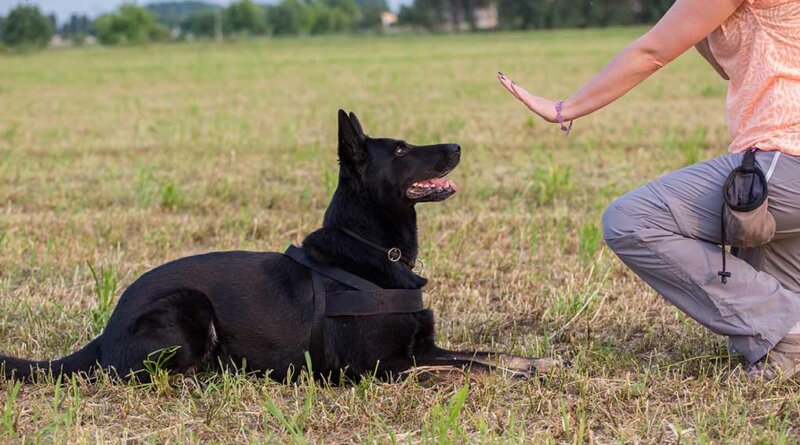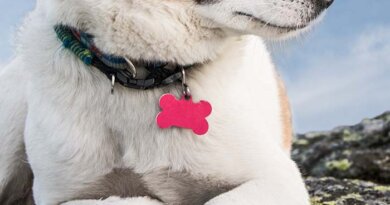REWARD-BASED TRAINING IN DOGS
Reward-Based Training adds something pleasant immediately after a behavior appears to reward the behavior and reinforce its learning. This type of training is a very effective way to educate dogs and other animals.
For example, when you educate your dog through rewards, you will ask him to sit. If he sits, you will give him a treat (the added nice thing). With this method, your dog will have a better chance of sitting up the next time you ask him. The behavior has been reinforced.
This is why reward-based training is so effective. However, as with any education technique, reward-based training requires practice and a good understanding of its effective mechanisms.
This blog will share some tips to help you educate and train your dog effectively with rewards and treats.
THE BENEFITS OF REWARD-BASED TRAINING OR POSITIVE REINFORCEMENT IN DOGS
The method of rewarding your dog with a treat throughout his training is therefore called “positive reinforcement.”
Unlike other more nefarious methods that punish unwanted behavior, you use positive reactions and treats to encourage your dog to learn commands and make a habit of good behavior.
Here are some of the reasons why positive reinforcement is important for the overall success of your dog’s education and well-being:
Positive Reinforcement is more effective.
If you use other training methods, like punishment with an electric collar, your dog will only learn fear. He will do what you say only out of fear or not do it because he will be traumatized. Plus, when you’re not there, bad behavior is likely to resurface.
Finally, the use of punishment can trigger an aggressive reaction in some dogs. It is indeed a factor of aggression towards family members and strangers.
In contrast, with positive reinforcement and its reward system, dogs will listen to their owners’ commands and learn new behaviors because they want to, not because they have to.
Numerous studies show that people who use reward-based training methods report that their dogs are more obedient than those who use negative techniques. By learning through positive reinforcement, your dog will thrive and listen to you better!
Best of all, he’ll be so enthusiastic that he’ll likely continue to behave well while you’re gone.
Positive Reinforcement strengthens the Parent/Animal Bond
If you constantly threaten your dog with physical or emotional pain, you will never be able to build a bond of trust. This fear-based training will make him hostile not only to unwanted behavior but to you as well.
And when we choose to adopt a dog, we usually seek to integrate a loyal and loving friend into our home, not the other way around.
Dogs love to be rewarded and admired for their good behavior, just like us humans! So if you want to be his friend, earn his trust by being benevolent, motivating, and encouraging during training instead of becoming his torturer.
Positive Reinforcement calls for Enthusiasm.
Educating your dog through positive reinforcement is like a game for him if your companion is anxious to be trained because he knows that you will have a good time together and that he will receive rewards.
It will be easier for you to teach him commands and behaviors faster!
The use of positive reinforcement is thus better for the human-dog bond and better for the welfare of the animals than the use of negative reinforcement.
THE DOS AND DON’TS OF REWARD-BASED TRAINING FOR DOGS
Here are some actions to apply and those not to reproduce as part of a positive reinforcement education.
GIVE YOUR DOG A REWARD HE LOVES
You might think dog biscuits are the best treat, but if your dog disagrees with you, you won’t strengthen anything using them in your training.
Be sure to choose something that your dog really enjoys. The rewards could even be a petting, a toy, or a play moment – anything your dog enjoys is great reinforcement.
The wrong choice of reward can be detrimental to your training. If your dog doesn’t like something, it will, in effect, decrease his desire to repeat a behavior.
For example, “rewarding” your dog with a pat on the top of the head might sound like a good idea, but most dogs don’t like this kind of touch.
If your dog does not like pats on the head, you will decrease his obedience in the future because he will associate doing what you ask with something negative.
Make a list of all the things your dog enjoys, then rank the items from most exciting to least exciting. If your dog’s favorite thing is chasing a ball, put that at the top of the list. If the kibble is only exciting at mealtime, put that on the bottom, and so on.
Once you have your dog’s reward hierarchy, tailor the rewards to the difficulty of learning.
The more difficult the challenge, such as learning a new behavior or facing a distracting environment, the higher the reward.
Concretely and within the framework of the example above, use the kibble when you can get by easily and keep this ball for the most difficult tasks.
CONTROL THE FREQUENCY OF REWARD-BASED TRAINING
An environment can offer its own rewards, such as interesting smells, the sight of other dogs, or the ability to greet another person. This means that the rewards you offer are always in competition with the “rewards” worldwide.
Until your dog has mastered distractions, your reinforcement rate (how often you offer rewards) should be frequent enough that you and the training session are more exciting than the environment. Otherwise, you can reinforce the bad behavior with rewards that are beyond your control.
A common example is teaching your dog to follow you. The sight, sounds, smells, and even curbside trash can all make walking on the end of the leash better than your side. You need to make sure that you reward your dog often enough to compete with these distractions.
At first, a treat for every 15 steps won’t affect, but a treat for every step should make your dog want to walk alongside you.
CHOOSE THE RIGHT TIMING TO REWARD YOUR DOG
How quickly your dog receives, his reward can also have an impact on training. If you take too long to feed him the treat, your dog may get confused about what exactly he is being rewarded for.
Dogs live in the moment, so your response to their good behavior should be immediate. A typical mistake in training is offering a treat to the dog when he comes home from defecation.
But how can a dog know that the treatment is meant to go to the outside bathroom rather than entering through the back door? Be sure to offer your rewards as soon as possible after your dog engages in the behavior you want to reinforce.
CHOOSE THE RIGHT PLACE TO REWARD YOUR DOG
Just as the slow administration of treats can be confusing, a reward given in the wrong place can also be confusing. In other words, what does your dog do when you give him his treat? If you train him to a stationary position such as “sitting,” your dog should receive his reward when he is seated.
When he has to get up and walk to receive his treat, how can he understand that the treat is sitting and not walking? If you want your dog to work remotely, like staying on his bed while you walk away, find ways to reward him while he’s still on the bed.
Throw him a treat or use a remote reward dispensing device. We agree; It takes practice and planning to dispense treats quickly and accurately to the right place, but it’s worth it.
KEEP IT SHORT AND FUN
The point is to make your dog understand that good thing happen when they obey you. This is why you need to keep the training short, fun, and positive and ideally end on a high note.
WEAN YOUR DOG OFF TREATS WHEN IT’S TIME
While it’s okay to use treats early in positive reinforcement to achieve the behavior you want, it’s important to know how to let go of it while still giving your dog compliments and affection…
Your dog will eventually forget about the treats and do whatever you want to please you. You can also condition your dog to associate a certain sound, such as “Tsch!” Or a clicker upon receipt of a treat. So when you remove the treat, your dog will still react to the sound.
What not to do as part of my Dog’s Reward-Based Training?
MAKE THINGS MORE COMPLICATED
If you want your dog to play “go fetch,” don’t tell him to “fetch the ball there, please.” Instead, tell him “go get it” and reward him immediately when he does.
If your commands or teaching, in general, get too complex, your dog will never understand. Be specific and simple.
SHOW INCONSISTENCY IN REWARD-BASED TRAINING
You can’t reward your dog for not lying down on the couch and then getting him on it to pet him. Such behavior will only confuse him about what you want.
Additionally, everyone in your household must follow the same rules; otherwise, your dog will be confused trying to figure out how to behave with each person.
NO LONGER CORRECTING YOUR DOG
A big mistake that often accompanies positive reinforcement is giving up and thinking that you couldn’t evolve your dog anymore. This is absolutely not true.
If a dog behaves inappropriately, you can and always should correct his behavior.
You should strive to separate ‘correction time’ from ‘positive reinforcement time.’ Be balanced, just as if you were raising a child.
REWARD VS DISCIPLINE-BASED TRAINING
Previous studies have suggested that training methods based on rewards and punishment are effective. While training based on punishment can negatively affect. These studies tend to focus on police and laboratory dogs rather than family pets.
Most wear shock collars, which have been banned in several countries, as punishment.
The University of Southampton, in the United Kingdom, and the University of Life Sciences in Norway conducted a study entitled “The importance of consistency in the training of dogs”.
It was published, in May 2007, in the Journal of Veterinary Behavior: Clinical Applications and Research.
The purpose of this study was to determine whether the punishment was a risk factor for the development of problem behaviors.
The study also looked at the combined effect between obedience and specific problem behaviors by rewards, punishments, attitudes, and rule structure.
The rule structure was defined as permissiveness versus rigor, as well as consistency when applying the rules.
The study showed that punishment is negatively correlated with obedience and positively with training problems. The rule structure was related to higher levels of obedience and fewer training problems.
Another study was conducted at the University of Bristol, UK. It was published in the September-October 2008 issue of the Journal of Veterinary Behavior.
Clinical Applications and Research, the results suggest that dogs trained with positive reinforcement alone demonstrated fewer behavior problems.
And dogs whose owners used punishment training were much more likely to show a fear response toward other dogs.
The more punishment a dog had received in the test, the more “pessimistic” it was.
These “pessimistic” mindsets have been associated with separation anxiety and other problem behaviors in dogs.
In summary, rewards-based training can take time. But the good thing about it is your dog doesn’t live in fear or constant stress compared to punishment-based training.
CONCLUSION – YOUR DOG SHOULD DESERVE HIS TREAT IN REWARD-BASED TRAINING
So why not treat your dog just because? Maybe he is looking at you with his big loving eyes. Because you would ruin all the progress, you have made in training!
Don’t feed your dog treats when you feel like it. Because the feeling of reward that comes with learning new things will go away.
If you want your dog’s training to go well and remember everything he has learned, he must deserve his reward!
READ NEXT: Sit Means Sit Dog Training Franchise Focuses on Positive Reinforcement











